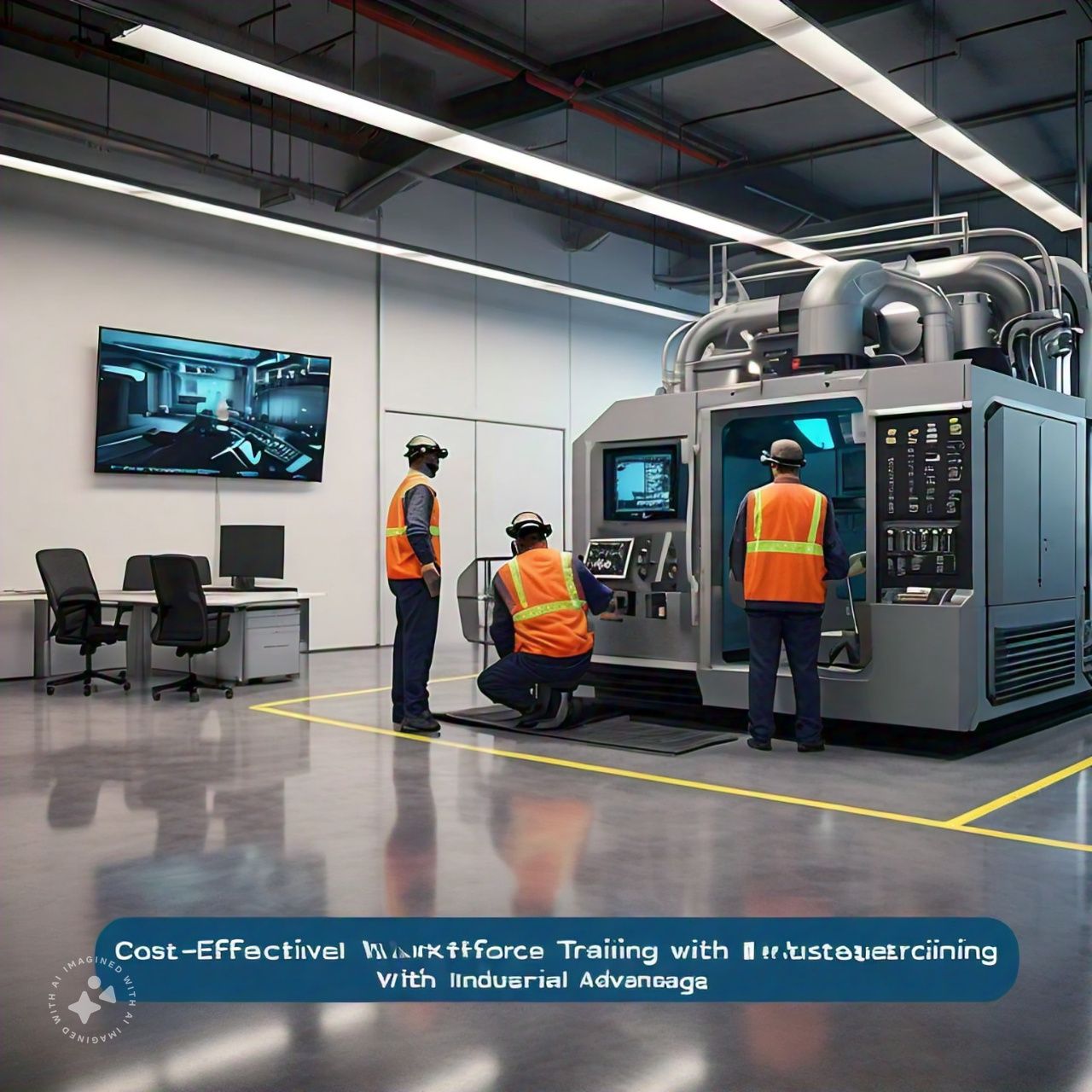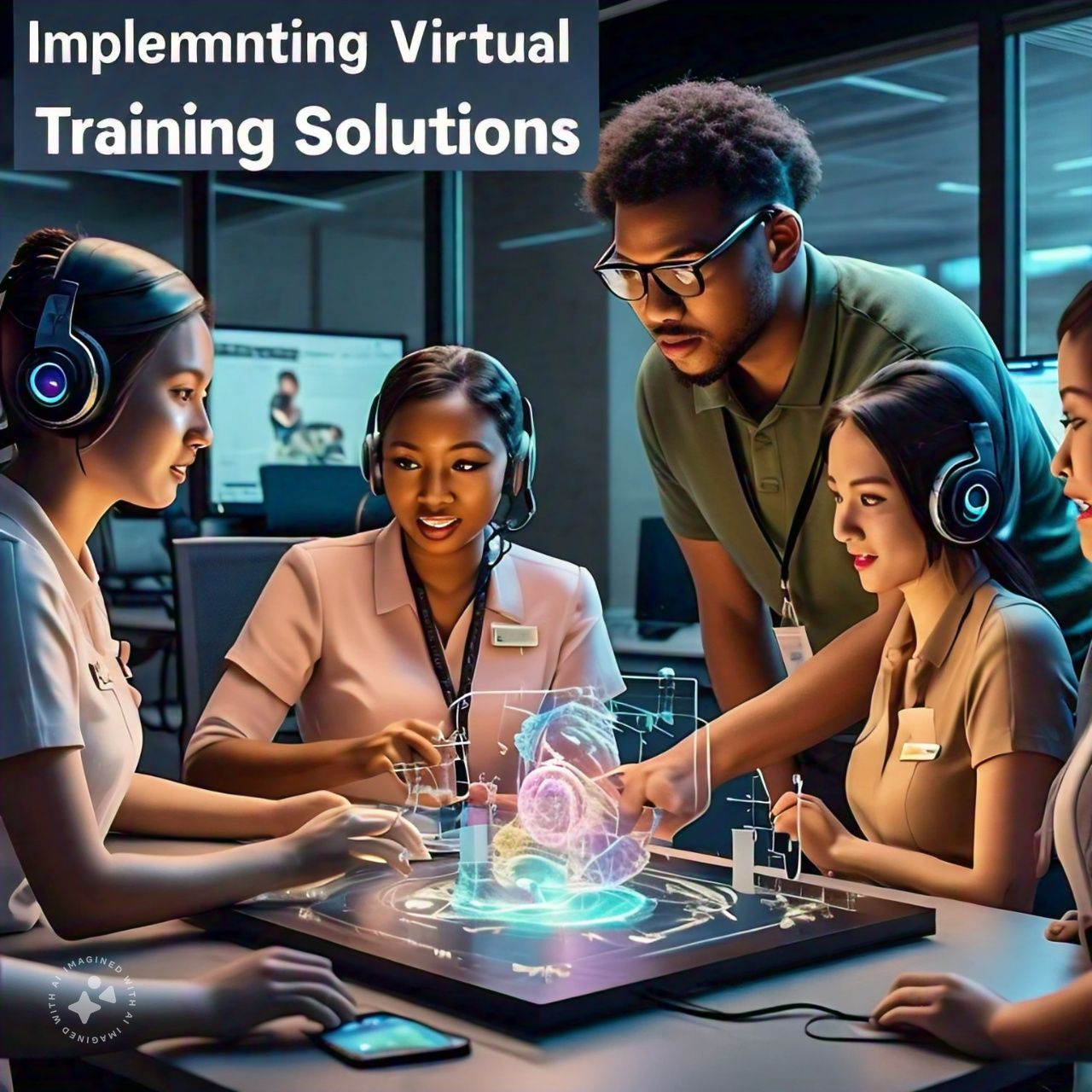In today’s rapidly evolving business landscape, staying competitive means adopting cutting-edge technologies. Virtual Reality (VR) is one of those innovations transforming the way companies approach training and productivity. As more businesses recognize the potential of VR, many are asking, “How to implement Virtual Reality in business?” This article explores how companies can use VR to improve employee training, enhance productivity, and create more engaging work environments.
The Role of Virtual Reality in Business
Virtual Reality offers immersive, interactive, and realistic experiences that make it a powerful tool for businesses. While VR is often associated with gaming and entertainment, its applications in corporate environments are growing rapidly. It allows businesses to simulate real-world scenarios in a controlled environment, offering employees hands-on experience without the associated risks or costs.
For businesses, VR can provide valuable training and development opportunities, streamline processes, and improve employee performance and productivity. When implemented correctly, it can become a game-changer in how companies train their workforce and improve operational efficiency.
Benefits of Using Virtual Reality for Employee Training
Virtual Reality is particularly effective for employee training due to its ability to create immersive learning experiences. Below are some ways VR can enhance training programs:
1. Simulating Real-Life Work Environments
With VR, businesses can replicate real-world work environments, allowing employees to practice skills and procedures in a safe, simulated setting. For example, in industries like manufacturing, construction, and healthcare, where mistakes can be costly or dangerous, VR provides a safe way to learn without putting employees or resources at risk.
2. Hands-On Learning Experience
VR allows employees to engage with virtual objects and tools in a way that traditional training methods—like reading manuals or watching videos—cannot offer. This hands-on learning approach enables employees to understand complex procedures and technologies more effectively. They can interact with virtual components, try different approaches, and learn through trial and error, which boosts retention and skill development.
3. Reducing Training Costs
Traditional training methods, especially those involving physical tools, spaces, or travel, can be expensive. With VR, businesses can create scalable, reusable training programs that reduce costs associated with in-person training. Employees can access virtual training sessions from anywhere, reducing the need for expensive resources or travel costs.
4. Increasing Engagement and Retention
Interactive and immersive, VR training is far more engaging than traditional methods. Employees are likely to feel more involved in the learning process, which can lead to higher retention rates. The immersive nature of VR also means employees can focus better and absorb information faster, leading to improved outcomes.
5. Real-Time Feedback and Assessment
VR training programs often include built-in assessments, providing immediate feedback on an employee’s performance. This real-time data helps businesses identify areas for improvement and tailor further training accordingly. Managers can track progress, measure skill development, and adjust training programs based on individual needs.
How to Implement Virtual Reality in Business
Implementing VR in your business requires thoughtful planning and execution to ensure its effectiveness. Here’s a step-by-step guide on how to implement Virtual Reality in business:
1. Identify the Training Needs
The first step is to determine which areas of your business could benefit from VR training. Start by assessing your current training methods and identifying pain points, such as high costs, low engagement, or inadequate learning outcomes. Industries like healthcare, manufacturing, logistics, and education can benefit immensely from VR simulations that offer hands-on experience in a controlled environment.
2. Choose the Right VR Tools and Software
There are numerous VR platforms available, each offering different features and capabilities. When choosing the right VR solution for your business, consider factors such as the complexity of your training needs, scalability, and integration with your existing systems. Some popular VR training platforms include Oculus for Business, HTC Vive, and Microsoft HoloLens.
3. Create Customized VR Content
Once you have selected a VR platform, you need to develop custom training content tailored to your business’s unique needs. This could involve creating virtual simulations that mimic real-world tasks, procedures, or scenarios employees encounter in their jobs. Partnering with a VR content development company can help ensure the simulations are realistic, interactive, and engaging.
4. Test and Iterate
Before rolling out VR training across the organization, it’s crucial to run pilot programs to test its effectiveness. Gather feedback from employees and managers to assess how well the program meets its goals. Make adjustments based on user feedback and ensure the VR simulations are aligned with the company’s training objectives.
5. Provide Support and Resources
For employees who are unfamiliar with VR technology, provide comprehensive training on how to use the VR hardware and software. Clear guidance and support are essential to ensure that employees can take full advantage of the VR training program. Create user guides and conduct initial onboarding sessions to help employees feel comfortable with the technology.
6. Evaluate Performance and ROI
Once the VR training is in place, monitor its effectiveness by tracking employee performance and gathering feedback. Evaluate whether the training is leading to improved productivity, faster skill development, and better learning outcomes. Measure the return on investment (ROI) by comparing the costs and results of VR training with traditional methods.
Boosting Employee Productivity Through VR
Beyond training, Virtual Reality can enhance employee productivity in various ways:
1. Collaborative Virtual Workspaces
With VR, employees can collaborate in virtual workspaces, regardless of their physical location. These immersive environments enable remote teams to work together as if they were in the same room, improving communication, creativity, and problem-solving.
2. Task Simulation and Process Optimization
VR allows businesses to simulate tasks, processes, or production lines, helping identify bottlenecks and inefficiencies. Employees can practice and refine their workflow in a virtual space, optimizing processes before implementing changes in the real world.
3. Boosting Employee Well-Being
VR can also be used to provide wellness programs, meditation, and stress relief simulations for employees. These experiences can help employees recharge and reduce stress, leading to higher productivity and job satisfaction.
Conclusion
Virtual Reality has emerged as a powerful tool for businesses looking to improve employee training and productivity. By simulating real-world scenarios and offering hands-on learning experiences, VR can transform the way companies approach workforce development. For businesses wondering how to implement Virtual Reality in business, starting with training and productivity enhancement is an excellent first step. With proper planning, support, and evaluation, VR can drive innovation and create a more efficient, engaged, and productive workforce.
FAQs
1. How does Virtual Reality improve employee training?
Virtual Reality provides immersive, hands-on learning experiences that simulate real-life work scenarios, helping employees develop skills more effectively.
2. What industries benefit most from VR training?
Industries like healthcare, manufacturing, construction, and logistics benefit the most from VR training due to the complexity and risk associated with real-world tasks.
3. What are the key steps to implementing VR in business?
To implement VR, businesses should identify training needs, choose the right VR tools, create custom content, test the solution, and provide resources for employees.















Leave a Reply